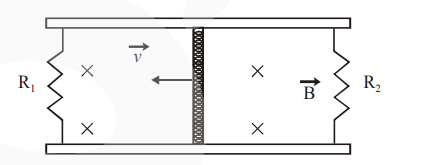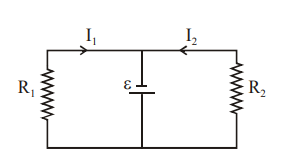A conducting bar of length L is free to slide on two parallel conducting rails as shown in the figure
Question:
A conducting bar of length L is free to slide on two parallel conducting rails as shown in the figure

Two resistors $R_{1}$ and $R_{2}$ are connected across the ends of the rails. There is a uniform magnetic field $\vec{B}$ pointing into the page. An external agent pulls the bar to the left at a constant speed $v$.
The correct statement about the directions of induced currents $I_{1}$ and $I_{2}$ flowing through $R_{1}$ and $\mathrm{R}_{2}$ respectively is :
Correct Option: , 3
Solution:

Click here to get exam-ready with eSaral
For making your preparation journey smoother of JEE, NEET and Class 8 to 10, grab our app now.
